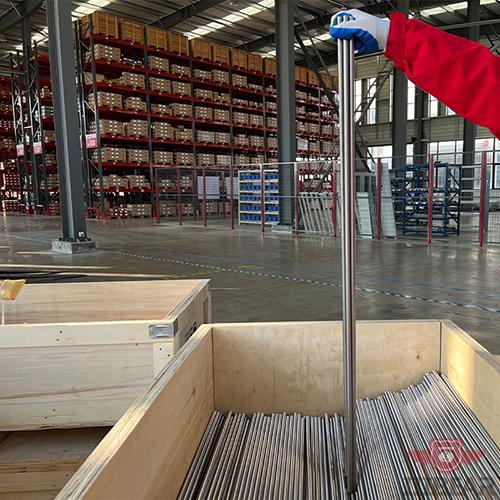Introduction to Stainless Steel Threaded Rods
Stainless steel threaded rods are widely used in construction, manufacturing, and DIY projects due to their exceptional strength, corrosion resistance, and durability. These rods are ideal for applications exposed to moisture, chemicals, or extreme temperatures, such as marine environments, chemical plants, and outdoor structures.
However, improper handling or installation of stainless steel threaded rods can lead to accidents, structural failures, or reduced performance. In this guide, we’ll explore safety tips and best practices to ensure secure fastening and optimal results.

1. Choosing the Right Stainless Steel Grade
Not all stainless steel threaded rods are created equal. The grade of stainless steel determines its properties, such as corrosion resistance, tensile strength, and suitability for specific environments.
-
304 Stainless Steel: Offers excellent corrosion resistance and is suitable for most general-purpose applications.
-
316 Stainless Steel: Provides superior resistance to chlorides and acids, making it ideal for marine and chemical environments.
-
316L Stainless Steel: A low-carbon variant of 316, ideal for welding applications where corrosion resistance is critical.
Always select the appropriate grade based on your project’s environmental conditions and load requirements. Using the wrong grade can compromise safety and performance.
2. Proper Handling and Storage
Stainless steel threaded rods are durable, but they can still be damaged if mishandled or stored improperly. Follow these tips to maintain their integrity:
-
Avoid Contamination: Keep rods away from carbon steel or other metals to prevent galvanic corrosion (a chemical reaction that occurs when dissimilar metals come into contact).
-
Store in a Dry Environment: Moisture can cause surface staining or pitting, even on stainless steel. Store rods in a clean, dry area.
-
Use Protective Caps: Cover the threaded ends with plastic caps to prevent damage to the threads during transport or storage.
Proper handling and storage ensure that your stainless steel threaded rods remain in optimal condition until installation.
3. Installation Best Practices
Correct installation is crucial for the safety and longevity of your fastening project. Follow these steps to ensure a secure fit:
-
Inspect the Rods: Before installation, check for any visible damage, such as bent rods or damaged threads. Replace any defective rods immediately.
-
Use Compatible Nuts and Washers: Always pair stainless steel threaded rods with stainless steel nuts and washers to prevent galvanic corrosion and ensure a secure fit.
-
Apply Thread Locking Adhesive: In high-vibration environments, use thread-locking adhesive to prevent nuts from loosening over time.
-
Tighten Gradually: Use a torque wrench to tighten nuts gradually and evenly, avoiding over-tightening, which can strip the threads or damage the rod.
4. Preventing Corrosion and Wear
While stainless steel is highly resistant to corrosion, it is not entirely immune. Take these precautions to extend the life of your threaded rods:
-
Avoid Chloride Exposure: In environments with high chloride levels (e.g., coastal areas), use 316 or 316L stainless steel to prevent pitting corrosion.
-
Clean Regularly: Remove dirt, grease, and other contaminants that can trap moisture and lead to corrosion.
-
Apply Protective Coatings: For added protection, consider applying a corrosion-resistant coating or sealant.
Regular maintenance and proper material selection can significantly enhance the durability of your stainless steel threaded rods.
5. Safety Tips for Cutting and Modifying Rods
In some cases, you may need to cut or modify stainless steel threaded rods to fit your project. Follow these safety tips:
-
Use the Right Tools: Use a hacksaw, angle grinder, or band saw with a blade designed for cutting stainless steel.
-
Wear Protective Gear: Always wear safety goggles, gloves, and a mask to protect against metal shavings and dust.
-
Deburr the Edges: After cutting, use a file or deburring tool to smooth the edges and prevent injury.
Improper cutting techniques can weaken the rod or create sharp edges, posing safety risks.
Conclusion
Stainless steel threaded rods are a reliable and durable fastening solution for a wide range of applications. By choosing the right grade, handling and storing rods properly, following installation best practices, and taking steps to prevent corrosion, you can ensure the safety and longevity of your project.
Whether you’re working on a construction site, installing plumbing, or tackling a DIY project, these safety tips and best practices will help you achieve secure and reliable fastening.

